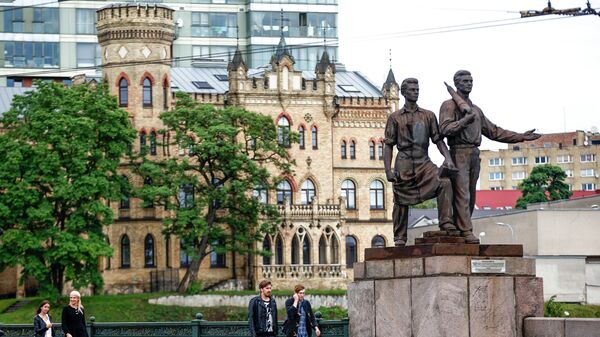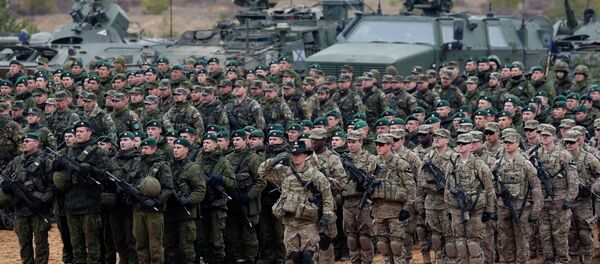Subjected to years of back and forth debates about whether or not to remove the statues from the bridge following Lithuania's independence from the Soviet Union, the monuments have once again become the center of an emerging political scandal. The city's new, moderate nationalist Mayor Remigijus Simasius has recently announced that the aging sculptures pose a danger to passersby, and will soon be removed for restoration. However, as noted by popular Lithuanian news hub Delfi.lt, the statues' defenders fear that once the monuments are removed, city authorities will cite lack of funds to restore them and put them back in their place.
Since 1997, the statues have been listed objects of Lithuania's cultural heritage by the Department of Cultural Heritage. This means that to remove them permanently, city authorities would require the permission of the department. Failing this, the mayor's office will formally only have the right to temporarily dismantle the statues, pending future restoration. Commenting on the situation in local media, the Department of Cultural Heritage has stated that the question about what to do with the sculptures will be decided only at the end of August or in the fall, even though work to begin removing them is set to start any day now.

Residents' Mixed Reactions to Mayor's Office Proposals
Commenting on the situation for the Russian-language edition of DW, local resident Dariusz Malinowski stated that "the statues are a part of our heritage, even if it is from the Soviet era. Those who shout that it is necessary to demolish and forget everything Soviet do not give a thought to the fact that this way of thinking would erase a huge chunk of Lithuania's history."
Speaking for Gazeta.ru, Lithuanian architect Julius Narkunas noted that he has "no idea why authorities have decided to remove these monuments now. Public opinion in this respect is divided in Lithuania. Some speak out aggressively against everything that is in any way connected with the Soviet era. Others look at the monuments more calmly and realize that the city and its people must hold on to their history…In general, ideologizing the city's architecture is foolish. The sculptures will not enable us to change the past, but will help us to remember it. In general, as a resident of Vilnius, I cannot imagine the bridge without these sculptures."
With most of the country's Soviet era monuments already long-gone, Narkunas compared the Green Bridge monuments with the Berlin Wall: "Everyone in Berlin rejoiced after the wall's fall, but they kept a piece of it for memory. I think the same should be done with the monuments to the Soviet period in our city."
Meanwhile, Lithuanian Union of Russians MP Larisa Dmitriyeva stated that the idea coming from the mayor's office is "an act of ignorance," noting that "it's a Bolshevik kind of logic to seek to just demolish everything," and adding that following the mayor's logic, "our Supreme Court building would have to be demolished as well," given its association with the Soviet past.




